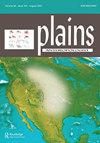Decentring archaeology: Indigenizing GIS models of movement on the plains
Q2 Social Sciences
引用次数: 0
Abstract
Avenues of travel employed by past people have often become obscured by both natural and human processes. Relocating them with traditional archaeological field methods is thus difficult, and other approaches, such as relying on historic documents or uncritically employing GIS analyses have often been found to be problematic due to their colonizing impacts. That does not mean, however, that all archaeological approaches need to be cast aside. A decolonizing lens can be applied to existing methods to reveal a past that privileges Indigenous perspectives. By incorporating the concept of relational affordances, and identifying past significant places, this paper takes just such an approach when using GIS to reconstruct past avenues of travel along the Red Deer River in southern Alberta. By critically examining archaeological data and historic documents with a decolonizing perspective, significant places to past people are discovered, and a long-forgotten river crossing is relocated.分散考古:平原运动GIS模型的本土化
过去人们使用的旅行方式往往被自然和人类的过程所掩盖。因此,用传统的考古现场方法重新安置它们是困难的,而其他方法,如依赖历史文件或不加批判地使用GIS分析,由于其殖民影响,往往被发现是有问题的。然而,这并不意味着所有的考古方法都需要被抛弃。非殖民化的视角可以应用于现有的方法,以揭示赋予土著观点特权的过去。通过引入关系可供性的概念,并识别过去的重要地点,本文在使用GIS重建阿尔伯塔省南部红鹿河沿岸过去的旅行路线时正是采用了这种方法。通过以非殖民化的视角批判性地检查考古数据和历史文献,发现了对过去的人来说意义重大的地方,并重新安置了一个被遗忘已久的河流穿越点。
本文章由计算机程序翻译,如有差异,请以英文原文为准。
求助全文
约1分钟内获得全文
求助全文

 求助内容:
求助内容: 应助结果提醒方式:
应助结果提醒方式:


